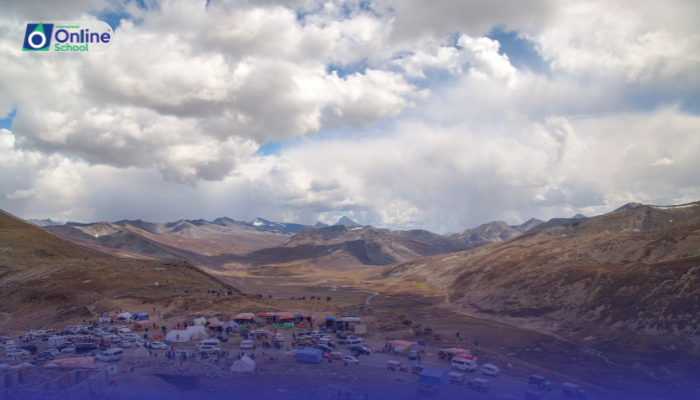
Northern Pakistan's picturesque Kaghan Valley is a place of fairytales. According to one version of a local legend, a prince of Persia fell in love with a fairy princess on the crystalline waters of Lake Saifult Muluk. But a giant was also in love with the princess, and held her captive. One day, the prince escaped with her, and in his fury, the giant flooded the valley and created lakes with his tears. Today, visitors from around the world travel to Kaghan Valley for its alpine lakes, mountain scenery, and clear night skies.
In northern Azad Kashmir, the bow-shaped Neelum Valley is sandwiched between 13,000-foot peaks and blanketed by verdant forest and streams. The small hilltop village of Arang Kel, is known as the pearl of Neelum Valley.
Pakistan is also rich in vegetation and fauna. With their alpine meadows and permanent snow line, coniferous forests down the sub-mountain scrub, the vast Indus plain merging into the great desert, the coastline and wetlands, the Himalayas, Karakoram and the Hindukush ranges all offer a remarkably rich variety of vegetation and wildlife including avifauna, both endemic and migratory. Ten of eighteen mammalian orders are represented in Pakistan with species ranging from the world's smallest surviving mammal, the Mediterranean Pygmy Shrew, to the largest mammal ever known, the blue whale.
The Punjab province comprises rich agricultural lands, an extensive network of rivers and channels, shrines, ancient forts and gardens from the Mughal era: Over 2,000 years ago, the world famous Gandhara Buddhist civilisation flourished in Northern Pakistan, with Taxila as the principal seat of Buddhist learning. On this land of five rivers a number of places are worth a visit which include Shalimar Gardens Lahore, Wazir Khan Mosque, Tomb of Jahangir, Rohtas Fort. Lahore Fort (Shahi Qila), Badshahi Mosque, Minar-e-Pakistan, Taxila Museum, Khewra Salt Mines, Katas Raj Temple, Kallar Kahar, Derawar Fort and Noor Mahal Bahawalpur.
Question 1: What legend is associated with Lake Saifult Muluk in the Kaghan Valley?
Answer: According to local legend, a prince of Persia fell in love with a fairy princess on the waters of Lake Saifult Muluk, but a giant also loved her and held her captive. The prince eventually escaped with her, causing the giant to flood the valley and create lakes with his tears.
Question 2: What are some attractions that draw visitors to the Kaghan Valley?
Answer: Visitors are drawn to the Kaghan Valley for its alpine lakes, mountain scenery, and clear night skies.
Question 3: What is the significance of Arang Kel in the Neelum Valley?
Answer: Arang Kel is known as the pearl of Neelum Valley, a small hilltop village surrounded by verdant forests and streams.
Question 4: What variety of vegetation and wildlife does Pakistan offer, according to the paragraph?
Answer: Pakistan offers a rich variety of vegetation and wildlife, ranging from alpine meadows, coniferous forests, and sub-mountain scrub to avifauna. The Himalayas, Karakoram, and Hindukush ranges contribute to this diversity.
Question 5: What historical civilization flourished in Northern Pakistan, according to the paragraph?
Answer: The world-famous Gandhara Buddhist civilization flourished in Northern Pakistan over 2,000 years ago, with Taxila as the principal seat of Buddhist learning.
Question 6: Name three historical landmarks in Punjab province mentioned in the paragraph?
Answer: Some historical landmarks in Punjab province mentioned in the paragraph are Shalimar Gardens Lahore, Wazir Khan Mosque, and Tomb of Jahangir.